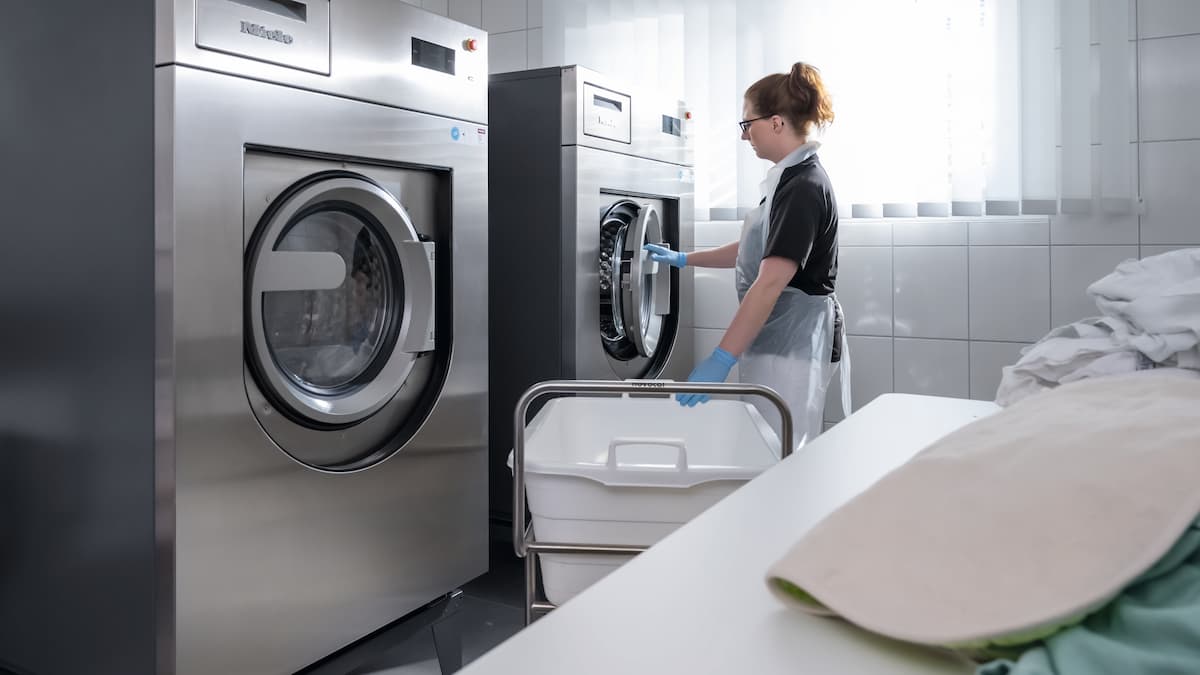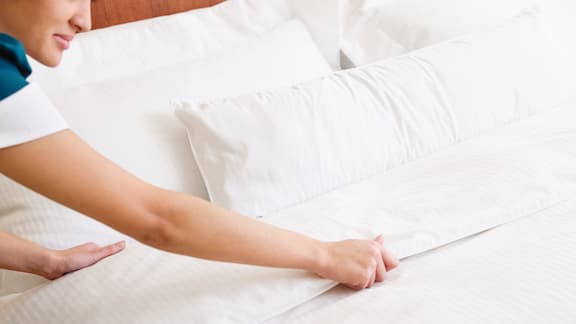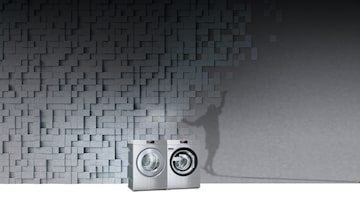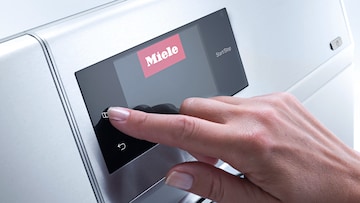
Washing duvets and pillows
Processing duvets and pillows

After all, pillows and duvets need to be washed regularly in care homes. Bodily residues such as perspiration and dead skin cells offer bacteria and dust mites the ideal conditions in which to propagate. And this leads to unpleasant odours. Furthermore, they can cause residents who suffer from allergies to sneeze and cough. Care homes, therefore, need to have a laundry cycle where these items are washed once or twice a month; if residents are sick or the linen is contaminated, this must be dealt with straightaway.
An explanation of how to wash pillows and duvets can be found on the manufacturers’ care labels. Fabric conditioner should not be used, as it could cause the filling to clump. Machines featuring special programs for duvets and pillows use a huge amount of water to rinse away all the detergent residues.
Further tips:
- Microfibre pillows and pillows with a synthetic filling are particularly easy to reprocess and can even be washed at 90 °C.
- Pillows containing a large proportion of Tencel, a modern fibre, are ideal for managing moisture levels. Bacteria do not stand a chance as moisture is quickly extracted and discharged.
- Wash down-filled pillows and quilts at 60 °C, then dry in a tumble dryer to prevent the filling from clumping.
- Store spare duvets and pillows in a well-ventilated, dry place.
This article is part of our customer magazine "PROconcept". You can find a download area with our editions here.









